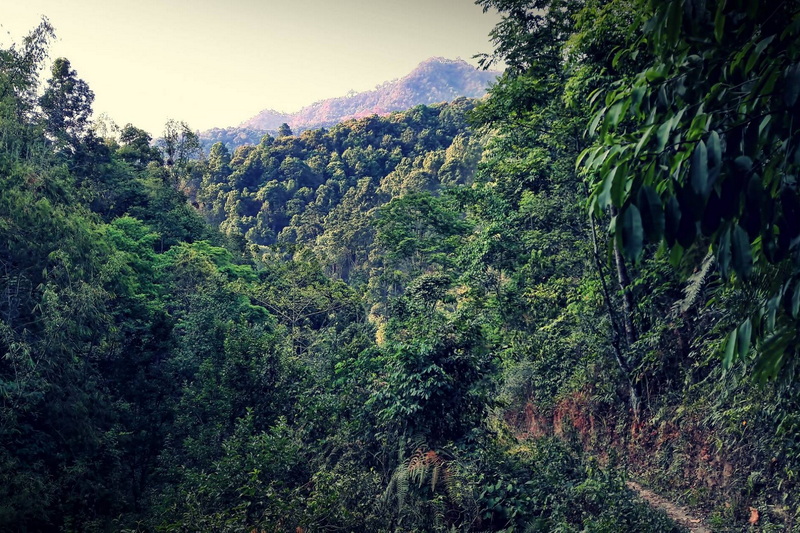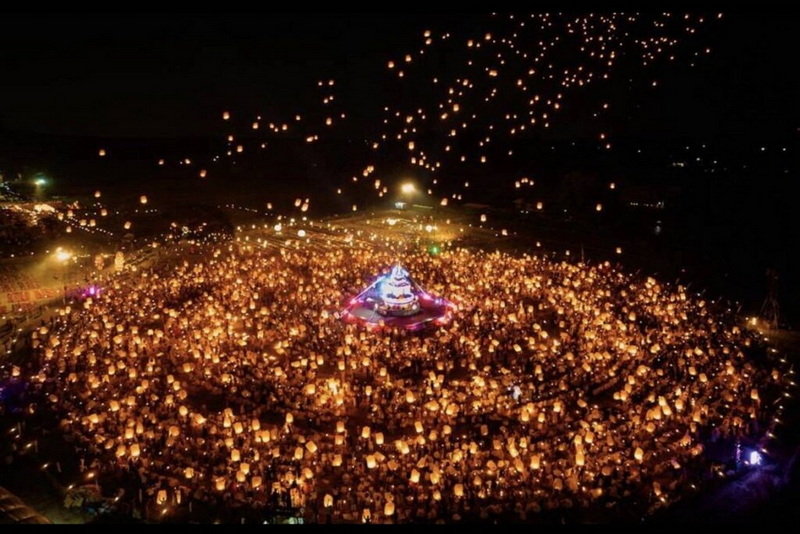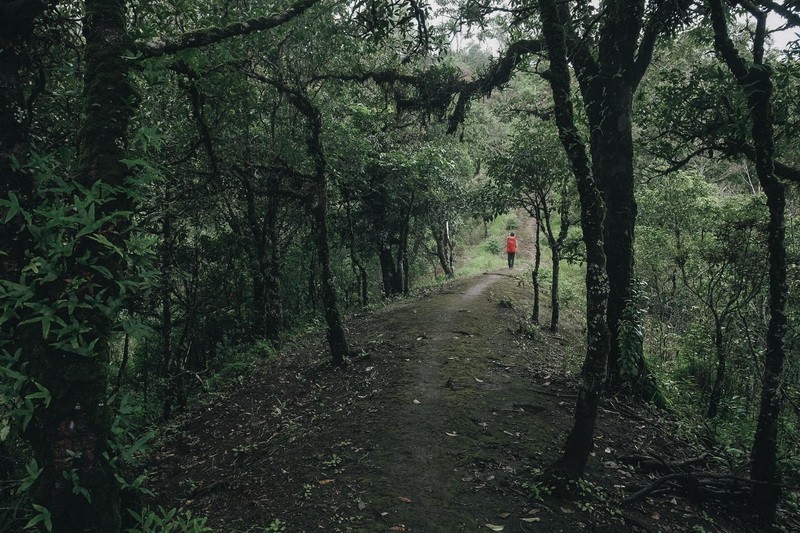Wat Umong – The Enchanted Forest Temple of Chiang Mai

Delve into the enchanting world of Wat Umong, the forest temple that offers a serene and historic retreat within the bustling city of Chiang Mai. This unique temple is a testament to the harmonious blend of nature, history, and spirituality.
A Timeless Sanctuary
Wat Umong stands as one of Chiang Mai’s hidden gems, offering a tranquil escape from urban life. Situated near Suthep-Pui National Park, this ancient temple, established in the 14th century by King Mangrai, provides a peaceful haven amidst lush greenery. Its serene atmosphere, surrounded by towering trees and cool air, makes it an ideal place for meditation and relaxation. The temple is widely known among Dhamma practitioners, attracting those seeking a quiet and reflective environment.


Wat Umong is located in Chiang Mai Province, Thailand. It is, of course, one of the eldest temples in Chiang Mai. Do you believe that it is 700 years old already?!
A True Forest Monastery
What sets Wat Umong apart is its unique status as a forest monastery. Unlike typical temples made of concrete, Wat Umong is enveloped in a natural setting with tall trees, a cool stream, a fish pond, and wooden bridges. This serene environment is ideal for Dhamma practice and meditation, offering visitors a refreshing change from the conventional temple experience. The moment you arrive, you’ll be greeted by the sight of lush greenery, a soothing stream, and natural wooden bridges, creating a peaceful and calming ambiance.
The Mystical Tunnel System
The highlight of Umong temple is its intricate tunnel system, constructed in the late 14th century by King Ku Na for meditation purposes. These tunnels, adorned with ancient murals of lotuses and animals, provide a mystical journey through time. The tunnels are long and interconnected, allowing for a contemplative walk through history. Inside, you’ll find ancient murals, mostly depicting lotuses and animals. Though many of these murals have faded, they still offer a glimpse into the artistic expression of the period. Walking through these dimly lit passageways, you can feel the spiritual energy that has been preserved for centuries.


The Majestic Chedi
Above the tunnels stands a historic bell-shaped Chedi, believed to have been built in the early 20th Buddhist era. This Chedi, with its distinctive Lanna architecture, has been recently restored, preserving its ancient charm. Surrounded by lush greenery, the Chedi is a focal point of the temple grounds and a symbol of Wat Umong’s enduring legacy. The Chedi’s base is adorned with intricate carvings and statues, adding to its majestic appearance. It’s a beautiful sight, especially when viewed from the surrounding gardens.
A Relaxing Pond and Natural Beauty
The temple grounds also feature a serene lake, where visitors can relax, feed the fish, and enjoy the calming sounds of nature. The lake is surrounded by big trees, butterflies, and the sounds of birds, making it a perfect spot for relaxation and reflection. The presence of tame deer adds to the charm, providing a delightful experience for nature enthusiasts. The area around the lake is well-maintained, with benches and shaded spots where you can sit and take in the tranquil surroundings.
Buddha Head and Spiritual Artifacts
Scattered throughout Wat Umong are various statues and relics, including the iconic Buddha head that greets visitors near the tunnel entrance. This head, along with other statues and relics, reflects the deep spiritual heritage of the temple. The temple also houses replicas of the Asokan Pillar and several ancient Buddha images, each with its own historical significance. These artifacts provide a deeper understanding of the temple’s history and its role in the spiritual life of the region.
Influence of Buddhadhasa Bhikkhu
A strong influence on the temple has been the Buddhist philosophy of the late Buddhadhasa Bhikkhu, one of Thailand’s most celebrated 20th-century monks. His statue stands on an islet in the lake to the south of the Chedi, embodying his teachings that favored natural environments over constructed ones. Buddhadhasa Bhikkhu’s philosophy is evident in the temple’s design, which harmonizes seamlessly with its natural surroundings. This influence can be seen in the way the temple buildings are integrated into the landscape, creating a sense of unity between the constructed and the natural.


A visit to Umong temple is a journey into the heart of Chiang Mai’s spiritual and natural beauty. Whether part of a day tour or a half-day excursion, this forest temple provides a unique blend of history, art, and tranquility. Don’t miss the opportunity to experience Wat Umong’s enchanting ambiance and rich heritage. The temple is open daily, and visitors are encouraged to explore its many facets, from the tranquil gardens to the historic tunnels and Chedi.
Feel free to go any time you want. If you’re interested in Dhamma practicing, you may contact the temple via its website www.watumong.org to ask for further details.
How to get there
Wat Umong is located in Suthep District, Muang County of Chiang Mai.
You may want to try your own car first. Start from Ton Payom Market, drive along Suthep Road. Then go through the Irrigation Canal Intersection, just 500 metres away from right behind Chiang Mai University. Then turn left for another 2 kilometres.
Or you can grab a red truck directly from Chiang Mai downtown too. The travel fees are between 30-50 Baht. If you plan to stay not so long at the temple, you should rent a whole red truck for yourself, in order to give you a ride on the way back, because the temple is in a quite-deep block.

Catmosphere Cat Cafe
Places Nearby
This ancient monument under Fine Art Department is the common Royal Temple of Third Class under Maha Nikaya subschool. Wat Suan Dok was earlier a flower garden of Mangrai royal family before an order to establish the royal temple on the land by King Kue Na, the sixth king of Mangrai Dynasty in 1371 (1914 B.E.). The building was determined to be the monastery for Sumana Thera who introduced Lanka doctrinal school in Lanna Kingdom. A forty-eight-metre-high bell-shape Lanka pagoda, now a national ancient monument, was also included in the construction, to retain Buddha’s relics from Sukhothai.
Chiang Mai Zoo is the first and only zoo in Northern Thailand where visitors can encounter animals in their natural habitat. Visit Chiang Mai Zoo’s Panda Hall for a memorable encounter with the rare giant panda. These marvelous creatures roam, interact, and play with each other in a comfortable environment.
Nimmanhaemin Road, or “Nimman” for short, is a rapidly growing area in Chiang Mai known for being the most modern and trendy area of the city. Located on the west side of Chiang Mai, it is a lively neighbourhood at all hours of the day. An easy area to explore on foot, here visitors will be welcomed with an abundance of quirky cafes, boutique clothing shops, and the city’s top restaurants and bars.
- Catmosphere Cat Cafe
(***Those who are cat slaves, DON’T miss it!!!!*** There are many cute cats around.)












[…] interesting, is the historical Buddhist pagoda that located inside this Wat Umong. There is a importantly Buddhist creature, which beautiful of the paternal designation of the […]